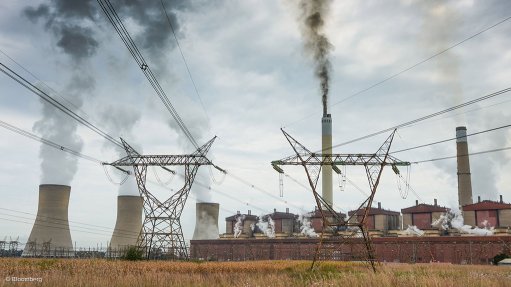Hazop studies
A hazard and operability (Hazop) study is a systematic brainstorming process of assessing the existence of hazards in equipment and plant operation. This involves a group of engineers and interested parties gathering and going through the operation of the components of an item of equipment or a process plant and discussing what can go wrong, what will be the result of this and how it could be prevented or how the damage from the fault can be mitigated.
Let’s say you have decided to convert a car to use hydrogen as fuel. Where best to put the fuel tank? Options are on the roof, in the boot or under the back seat. The hazards are a hydrogen leak as a result of valve or piping failure, a catastrophic leak owing to tank rupture, or a hydrogen leak owing to failure of piping. The results of the leak can be gas ignition or personnel asphyxiation. By placing the tank outside, the probability of personnel asphyxiation is almost eliminated and by installing a flow-check valve and ignition suppressor in the fuel line, the issue that remains is catastrophic leak owing to tank rupture. If the tank is made sturdy enough, rupture becomes unlikely.
You get the idea? So, here are examples of projects which could have had better results had a Hazop process been followed. The first is Piper Alpha, an oil rig in the North Sea, which was converted to extract gas as well as oil. For safety reasons, the various modules (such as the control room and gas compression) were originally organised so that the most dangerous platform operations took place far from the personnel areas. The conversion from oil to gas changed this safety concept, with the result that sensitive areas – for example, the gas compression modules – were next to the control room.In addition, on an oil rig, the danger is fire, whereas on a gas extractor, the danger is explosion. A gas leak in a compression module ignited the gas and it exploded, blowing through the firewall, which was not designed to withstand explosions. The control room was abandoned. The fire spread and the rig was engulfed in a fireball and sank. Of the crew, 165 died and 61 survived.
The second example is the death of Fundisile Jem, a labourer working for an electrical contractor at a refinery. While excavating near a substation, he stepped on the joint of an 11 000 V cable. The joint blew up and he was burned and died of his injuries. Investigations found that the joint was made between an XLPE cable and a lead-sheathed cable. The joint kit used was not suitable for this. The joint was installed since the lead-sheathed cable was cut to the correct length to terminate on a circuit breaker in a satellite substation. A decision had been made to move the substation so that the curve in an access road could be less curved so as to allow trucks to use the access road. Instead of replacing the lead-sheathed cable, it was decided (by the client) to install an additional length of cable – to save money and time. Lead-sheathed cable of the required length was not available. So, instead of buying a drum of cable and using part of this, it was decided to use the XLPE cable.
Then there is the Cape Town building fire. The roof of a building caught fire while a contractor was using a blow torch to apply derbigum. The acoustics engineer had specified that the roof build consists of a layer of magnesium oxide board, a layer of fibreglass batt and these two repeated as another layer. The quantity surveyor changed this to be two alternating layers of shutterply and flammable wood wool. This was ignited by the contractor using a blow torch. The building burnt down.
So, very often, the old saying – hindsight is 20/20 vision – comes to mind with any of these disasters. By subjecting construction to a safety-based approach with a Hazop study, many of these could probably be avoided.
Article Enquiry
Email Article
Save Article
Feedback
To advertise email advertising@creamermedia.co.za or click here
Comments
Press Office
Announcements
What's On
Subscribe to improve your user experience...
Option 1 (equivalent of R125 a month):
Receive a weekly copy of Creamer Media's Engineering News & Mining Weekly magazine
(print copy for those in South Africa and e-magazine for those outside of South Africa)
Receive daily email newsletters
Access to full search results
Access archive of magazine back copies
Access to Projects in Progress
Access to ONE Research Report of your choice in PDF format
Option 2 (equivalent of R375 a month):
All benefits from Option 1
PLUS
Access to Creamer Media's Research Channel Africa for ALL Research Reports, in PDF format, on various industrial and mining sectors
including Electricity; Water; Energy Transition; Hydrogen; Roads, Rail and Ports; Coal; Gold; Platinum; Battery Metals; etc.
Already a subscriber?
Forgotten your password?
Receive weekly copy of Creamer Media's Engineering News & Mining Weekly magazine (print copy for those in South Africa and e-magazine for those outside of South Africa)
➕
Recieve daily email newsletters
➕
Access to full search results
➕
Access archive of magazine back copies
➕
Access to Projects in Progress
➕
Access to ONE Research Report of your choice in PDF format
RESEARCH CHANNEL AFRICA
R4500 (equivalent of R375 a month)
SUBSCRIBEAll benefits from Option 1
➕
Access to Creamer Media's Research Channel Africa for ALL Research Reports on various industrial and mining sectors, in PDF format, including on:
Electricity
➕
Water
➕
Energy Transition
➕
Hydrogen
➕
Roads, Rail and Ports
➕
Coal
➕
Gold
➕
Platinum
➕
Battery Metals
➕
etc.
Receive all benefits from Option 1 or Option 2 delivered to numerous people at your company
➕
Multiple User names and Passwords for simultaneous log-ins
➕
Intranet integration access to all in your organisation

















